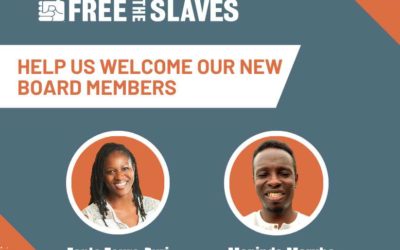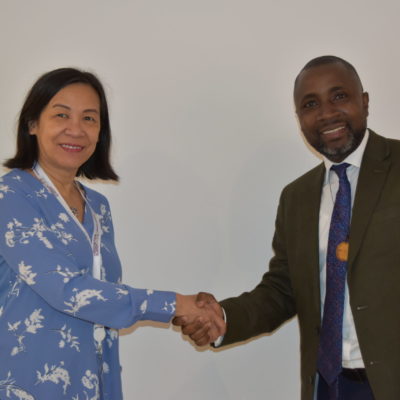Editor’s note: This post was written by Sarah Gardner, Development Associate at Free the Slaves.
The Lobby of all Lobbies. The Ground Floor. As Development Associate at Free the Slaves, I work to raise funds and donations. To this end, I recently attended my first Clinton Global Initiative (CGI). By “attended” I mean I spent hours in the lobby of the Sheraton Hotel in New York City. I didn’t have access to the event itself.
A completely fair question: How is hanging around a hotel lobby a valuable activity for a development associate? Well I can tell you: the CGI lobby turned out to be the place to be. Especially if you have a cause you believe in, a great pitch, and can talk for hours upon hours. The lobby can be where the action is.
What is referred to as “The fashion week” of non-profits, CGI is the stomping ground for philanthropists, politicians, activists, artists—all the great, humanitarian “movers and shakers” of our day. The forum’s intent is to answer the question, “What are the new and innovative ways people are solving the most dire and devastating problems on this earth?” Thankfully, human trafficking is an issue not only highlighted at CGI, but assigned a separate roundtable for all the thought-leaders on this subject to come together and talk big picture. Kevin Bales, Free the Slaves President, has now attended the session two years in a row. Last year, Bill Clinton held up Bales’ book Ending Slavery during one of his speeches.
HOW DO WE MAKE THEM CARE?
Bill Gates had some sobering insights about how to the long term effort of humanitarian work, when he described what fully eradicating polio was going to look like. He said the last steps of eradicating polio will be the toughest, cost the most, and will test the resilience of even the most invested. Despite great, recent successes, to fully eradicate polio, it would now be an arduous fight to the finish line.
And that is what ending slavery looks like. Kevin talks about this often—Yes, people are now more aware of the issue, and there is great work being done around the world to emancipate communities in a sustainable way. But what will happen with the initial excitement in the activist community wears off?
A long term, anti-slavery movement has unique challenges. Today, our mission is no longer: How do we alert everyone that modern slavery exists? They know now. Our new mission is: How do we make them care? And care enough to invest millions of dollars to ensure the complete eradication of slavery.
This is a challenge, but it is also the best part of my job at Free the Slaves. I never felt this more than when I was at CGI. At the event, I came into contact with some people from an anti-childhood obesity organization. I was wearing my “Slavery Sucks” t-shirt, which always attracts some attention and sparks conversations. So we chatted. They asked, me, “How do you get people to care about human trafficking, when no one really knows anyone who has been trafficked?” She continued, “So much of what we are able to raise for our organization [comes] because someone knows someone with diabetes who is struggling, sick, or may even have passed away.”
I agreed with her, that much like the challenge of any organization working on issues of poverty, starvation, and health in the developing world, is to help realize how much they can do to help, and empower them to give. And I would even venture to say, that because slavery is often hidden, buried in backstreets, happening in rural places, there is even the added barrier of demonstrating it is happening, and in the numbers we know of….
SLAVERY IS “EVERYTHING”
In this moment, I realized what my approach to the Sheraton lobby would be. I realized, the more I could demonstrate the wide reaches of slavery, and make it relate to someone else’s work the better. It isn’t necessarily about demonstrating why this issue is more important, but rather how this issue touches everything. Slavery is a health issue. It is an Environmental issue. It is a Gender issue. It is an Education issue.
As I rubbed elbows with entrepreneurs, philanthropists and politicians, my job was to show them that they already cared about human trafficking. That we are all affected. It was in my most unguarded, honest moments that my message came through the clearest.
I ask all of you: Imagine you are spending a few days in the lobby of all lobbies, in the transient presence of powerful business tycoons and humanitarians—any one of whom has the power to be a game changer in the anti-slavery movement. What would you say if you only had a few seconds to convince one of these people that modern day slavery is the most important issue of our time?



